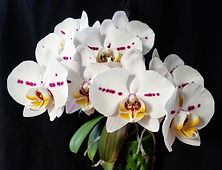About Orchids
Many of the world’s 30,000 plus species of Orchidaceae are native to tropical or sub-tropical regions around the world. This largest of plant families has developed complex strategies for survival and bizarre adaptations to a wide range of habitats. Orchids occur naturally on six continents; some even grow north of the Arctic Circle.
Approximately 90% of all orchid species grow in the Tropics. Most of those are epiphytic (growing on trees) and many wild populations are threatened by habitat loss and poaching. Orchids are specially adapted to a vast variety of growing conditions. Combinations of topography, geology, hydrology, geography and climate create a multitude of microhabitats that sustain certain species. More accurately, the adaptations of life forms to unique environmental conditions determine which species will evolve in a certain habitat. Thus, orchids are found in such diverse locales as steamy lowland jungles, cold Alpine settings, semi-arid locations with a distinct dry period, bogs, swamps and even rocky terrain.
Orchids have highly complex reproductive strategies (often dependent on a specific pollinator) and interesting systems for nutrition (sometimes involving a symbiotic relationship with fungi) that assure the species’ survival.
The passion for orchids can be traced back to the early Nineteenth Century when wealthy Europeans paid opportunists vast sums of money to risk life and limb in order to collect wild orchids from remote corners of the world. Today, many thousands of man-made hybrids form the basis of a nursery industry that sells more orchids than any other flowering plant.


